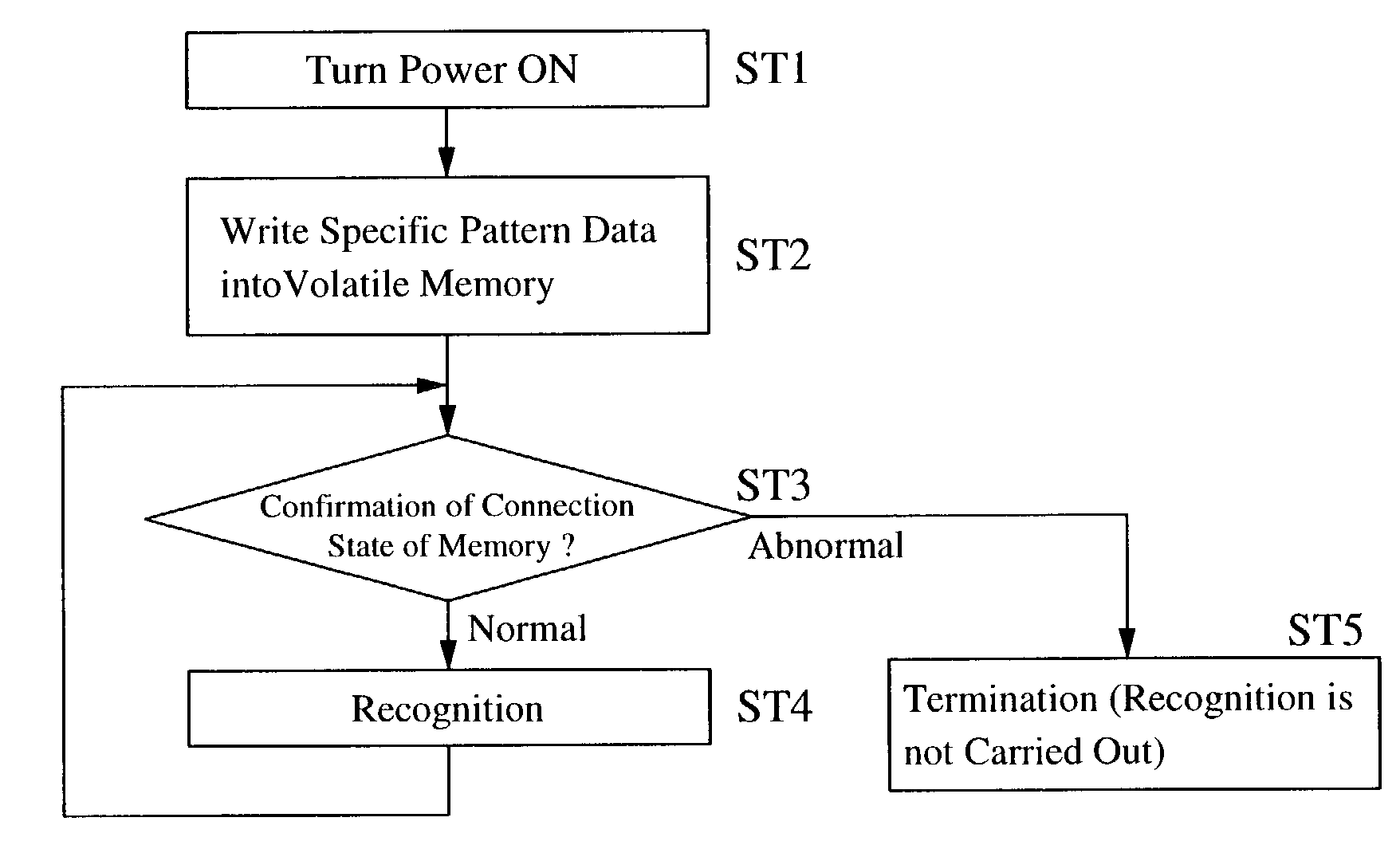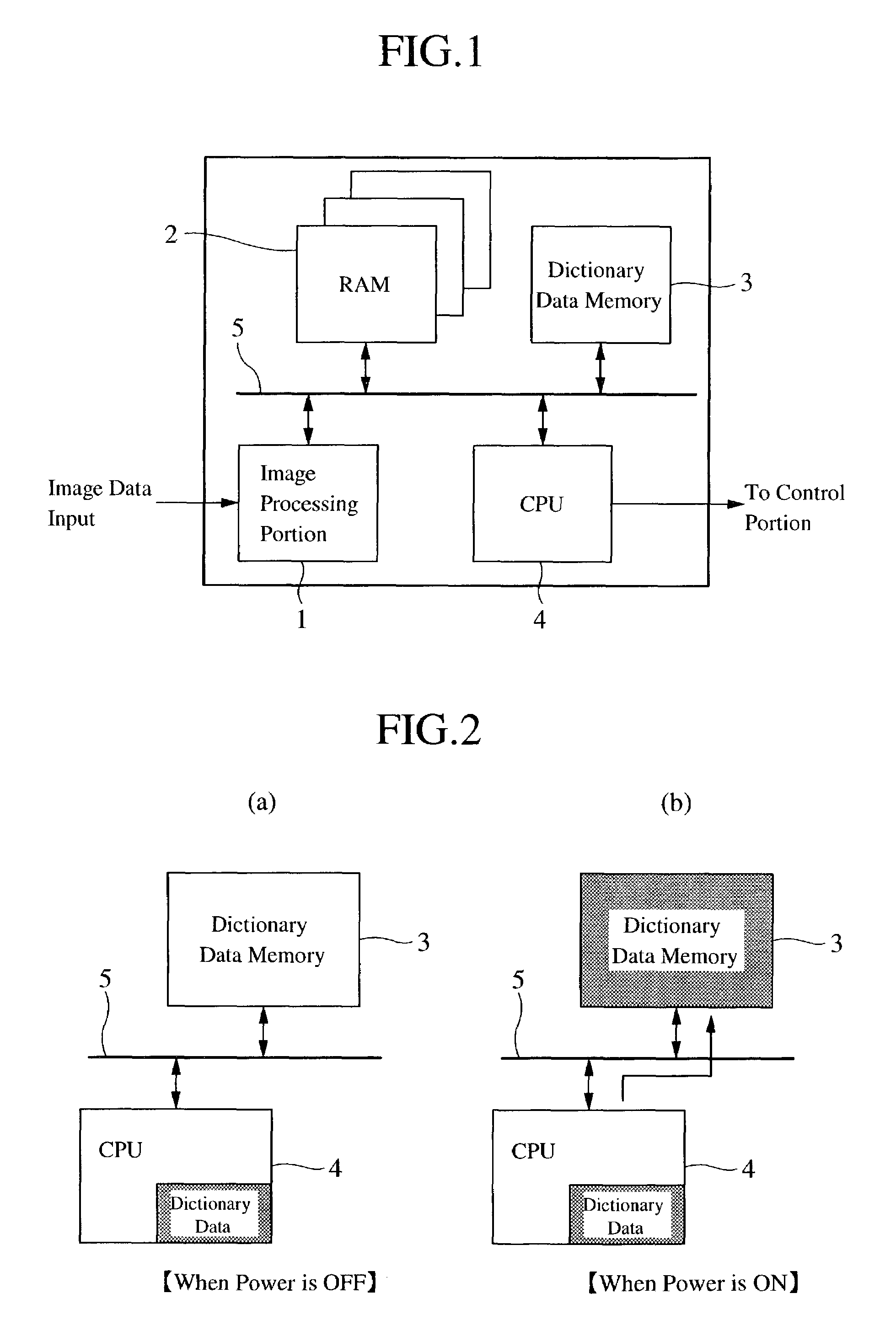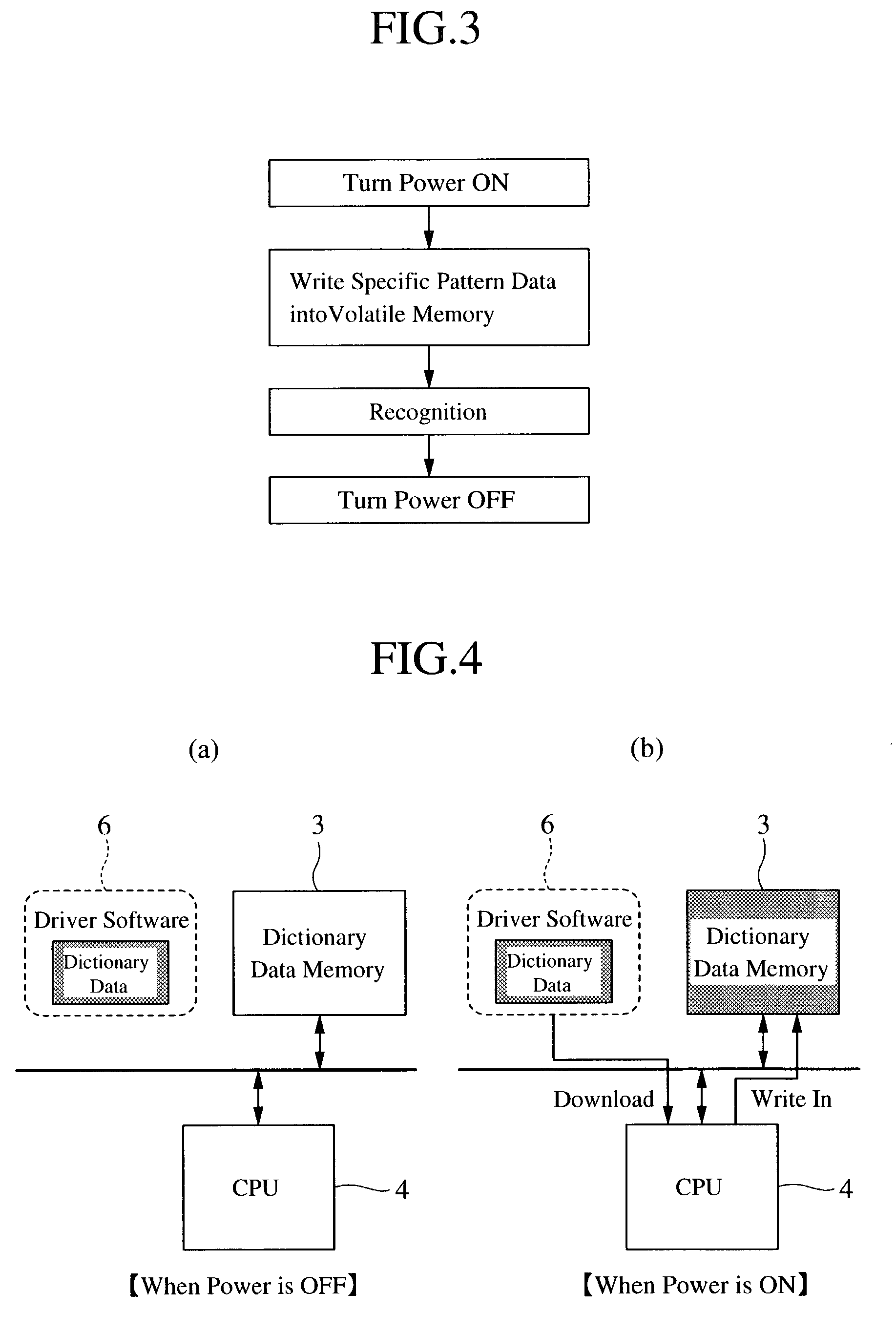Image recognition apparatus
a technology of image recognition and apparatus, applied in the field of image recognition apparatus, can solve the problems of inability to analyze the contents of dictionary data, inability to remove memory, etc., and achieve the effects of preventing counterfeiting, widening the range of choices, and suppressing the risk of counterfeiting
- Summary
- Abstract
- Description
- Claims
- Application Information
AI Technical Summary
Benefits of technology
Problems solved by technology
Method used
Image
Examples
third embodiment
[0038]FIG. 6 shows the function of the CPU 4 which is an essential portion of the present invention. Namely, in each of the embodiments described above, a volatile memory was used for the dictionary data memory 3, but in the present embodiment, a rewriteable memory is used.
[0039]Namely, in the power off state, dictionary data (specific pattern data) is held in the CPU 4 or a device driver 6, and when the power is turned on, the specific pattern data is written into the dictionary data memory (nonvolatile memory) (ST11, ST12). Next, a recognition process is carried out based on the specific pattern data that was written in (ST13).
[0040]Then, when the CPU 4 receives a power off signal, the CPU 4 erases the contents of the dictionary data memory 3 (ST14). In this way, by actively erasing the stored information of the dictionary data memory 3 when the power is turned off, because data is erased and does not exist in memory when the power is turned off, this has a strong effect against a...
second embodiment
[0042]Moreover, even in this type of arrangement which uses a rewriteable memory as the dictionary data memory, using the second embodiment as a base, as shown in FIG. 7, after the specific pattern data is written into the dictionary data memory 3 in accordance with the power being turned on (ST11, ST12), a confirmation of the connection state of the dictionary data memory 3 may be carried out (ST16), and then a determination of whether or not the recognition process will be executed may be carried out based on the confirmation results (ST17, ST18).
fourth embodiment
[0043]FIG. 8 shows the present invention. In each of the embodiments described above, examples applied to open systems which use a personal computer or the like were described. However, the present invention is not limited to such open systems, and it is possible to also apply the present invention to closed systems such as copy machines and the like.
[0044]Furthermore, prior art counterfeit prevention apparatuses have been supplied as a substrate, but in accordance with the high integration, lowered price and the like of integrated circuits in recent years, it has become possible to achieve this with one integrated circuit. Further, a high-performance central processing unit has also begun to be provided in the system of the body equipped with the counterfeit prevention apparatus. In this regard, in the prior art, even the recognition apparatus which was achieved by providing various components such as a central processing unit, an integrated circuit for counterfeit prevention, a di...
PUM
 Login to View More
Login to View More Abstract
Description
Claims
Application Information
 Login to View More
Login to View More - R&D
- Intellectual Property
- Life Sciences
- Materials
- Tech Scout
- Unparalleled Data Quality
- Higher Quality Content
- 60% Fewer Hallucinations
Browse by: Latest US Patents, China's latest patents, Technical Efficacy Thesaurus, Application Domain, Technology Topic, Popular Technical Reports.
© 2025 PatSnap. All rights reserved.Legal|Privacy policy|Modern Slavery Act Transparency Statement|Sitemap|About US| Contact US: help@patsnap.com



